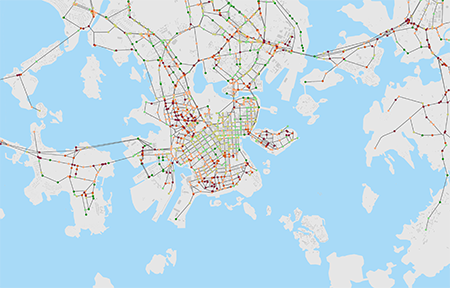Shared Mobility Simulations for Helsinki

This report examines how the optimised use of new on-demand shared transport modes could change the future of mobility in the Helsinki Metropolitan Area in Finland. Based on simulation, it provides indicators for the impact of shared mobility solutions on accessibility, metro/rail ridership, required parking space, congestion and CO2 emissions. The model also analyses service quality, efficiency and cost competitiveness of the shared solutions. In addition, the report explores the willingness among the citizens of the Helsinki region to adopt shared mobility solutions based on focus group analysis. The findings provide an evidence base for decision makers to weigh opportunities and challenges created by new forms of shared transport services. The work is part of a series of studies on shared mobility in different urban and metropolitan contexts.
Policy Insights
- Enable implementation of new shared mobility solutions in the Helsinki Metropolitan Area as an additional policy tool.
- Implement new shared mobility solutions at a sufficient scale to boost attractiveness and lower costs.
- Design shared mobility solutions so they feed rail/metro lines and replace low‑frequency, low‑occupancy bus services.
- Target shared mobility solutions for sub-urban car users currently not well served by public transport.
- Consider improvements in system capacity and access to rail and metro stations.